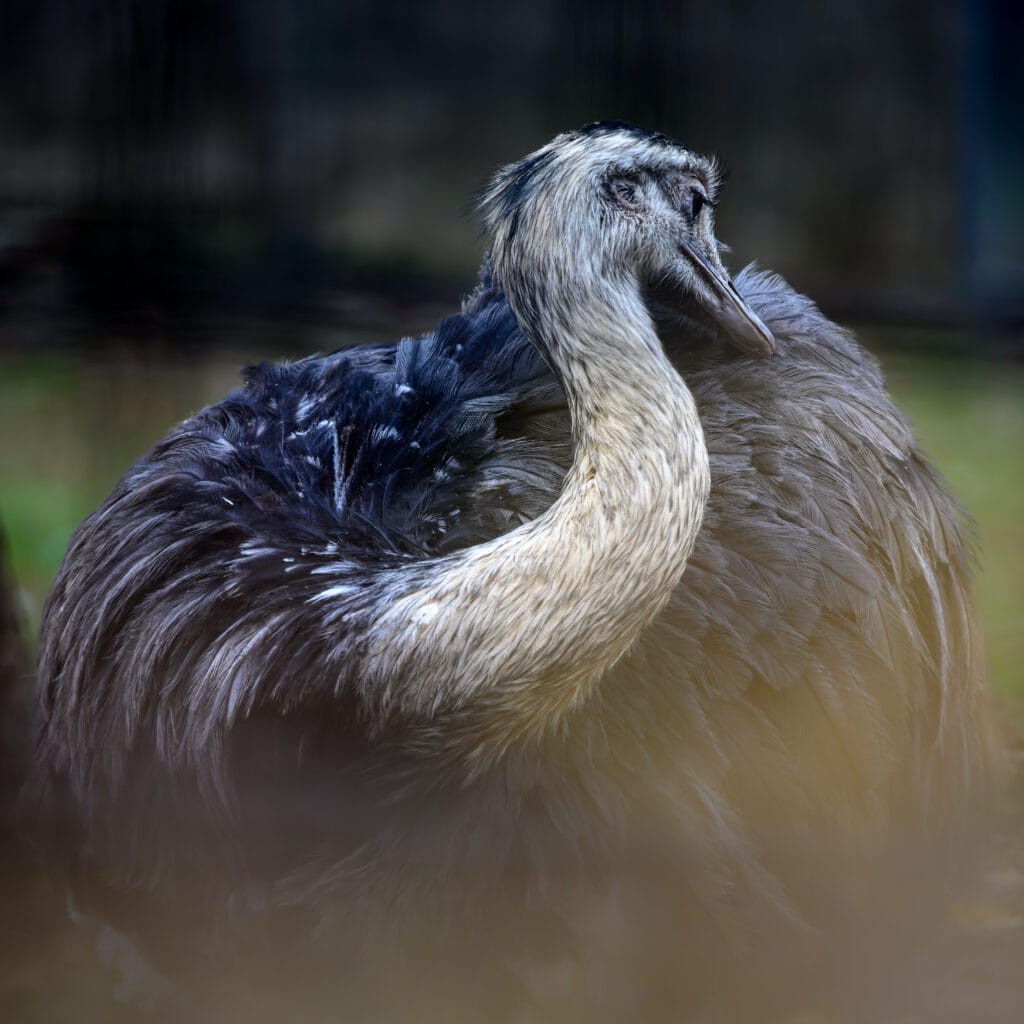You probably know about Ostriches and Emus. You may even be familiar with the colorful and dinosaur-like Cassowary. But did you know that the America’s have their own tall flightless birds? There are three birds belonging to the family “Rheidae.” These are the Greater Rhea, the Darwin’s Rhea (also called the Lesser Rhea), and the Puna Rhea. All three Rheas are South American natives belonging to the ratite family.
Ratites are birds that lack a keel on their sternum bone. This keel is where the muscles associated with flight would normally attach. So, ratites are flightless birds. The aforementioned Ostriches, Emus, and Cassowaries are all ratites, as is the much smaller black sheep of the family, the Kiwi bird.
Related Article: Flock of California Condors Seen in Contra Costa County For the First Time in a Century
Fun Facts About the Greater Rhea
The Greater Rhea is an interesting bird that a lot of people have never heard of. It is the forgotten member of the ratite family, but we can remedy that. Let’s explore some interesting Greater Rhea fun facts!
Large and in charge: Though they can’t rival the incredible size of the Common Ostrich, the Greater Rhea is quite a large bird. They are the largest South American birds and can stand up to five feet tall. Male Greater Rheas are usually noticeably larger than females.
A blended family: Greater Rhea romance is a communal affair. First, male Greater Rheas will court a harem of females that can be as small as just two birds but can number up to twelve female Rheas. To attract these females, the male Greater Rhea issues a booming call and performs a flashy wing display. If he succeeds, the females will mate with him. The male constructs a large nest where the females will all lay their eggs over the course of a week or more. With up to twelve females laying up to five eggs each, the largest Greater Rhea nests can contain as many as sixty eggs. The male Rhea then incubates this massive brood all by himself. He’ll fiercely defend the nest until the chicks hatch. Even the female Rheas themselves are not allowed to approach.
Speed demon: The Greater Rhea is once again eclipsed by the Common Ostrich with regards to speed. The Common Ostrich is the fastest runner amongst the world’s birds, with top speeds of up to 43 miles per hour. Make no mistake, though, the Greater Rhea may not be the fastest but it is built for speed. Sources vary on the actual top running speed of the Greater Rhea, but most list it as somewhere between 35 miles per hour and 40 miles per hour, much much faster than the fastest recorded human running speed. Although Greater Rhea are flightless, they have fairly large wings. These wings aren’t powerful enough to lift their heavy bodies, but they are capable of acting like giant sails or rudders, helping these birds balance and turn as they run at top speed. The Greater Rhea is both very fast and shockingly agile.
The Future of the Greater Rhea
The United States is home to quite a few Rhea farms and these birds are often reared for their eggs and meat, much like Ostriches and Emus. In the wild, however, the Greater Rhea is in danger. The IUCN Red List of Threatened Species considers the Greater Rhea to be both “Near Threatened” and declining. Its current population numbers are unknown, but habitat loss and hunting are thought to be significant contributors to its decline.
Popular Article: Species Spotlight: The Loggerhead Shrike

